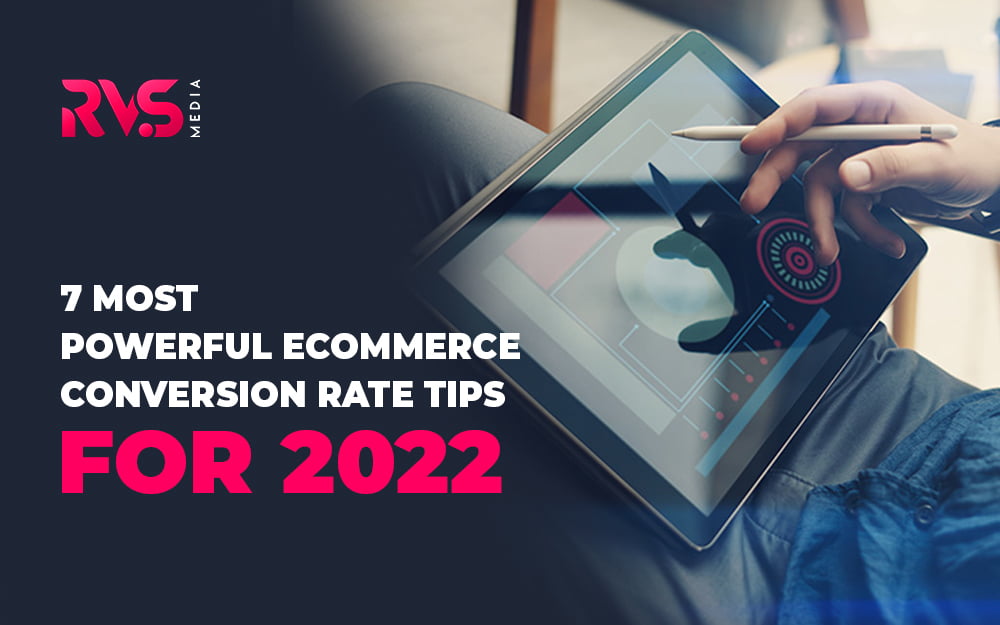7 Most Powerful Ecommerce Conversion Rate Tips For 2024
- Jun 23, 2022
- By Tarun

Estimated reading time: 8 minutes, 15 seconds
Is your eCommerce Conversion Rate going down despite all the efforts? Are you struggling to optimise your site for better conversions? If that’s your problem, you’re in the right place. We’ve got you covered!
It’s already 2024 and eCommerce is not going anywhere – it will STAY!
UK retail eCommerce revenue has been growing impressively over the last few years. And what we can tell is that this growth is going to increase exponentially in the coming years. After the massive increase in online sales due to the 2020 lockdown episode, British consumers are expected to take this to a next level. Projections say that online sales will grow up to £120.48 billion by the end of 2024.
Table of Content
- 7 Most Powerful Ecommerce Conversion Rate Tips For 2024
- Provide Impressive But Accurate Preview of Your Products
- Make Your Website Easy to Navigate
- Use C2C (Consumer-to-consumer) Marketing Strategy
- Meet Your Customers Where They Are
- Keep the Checkout Process Short and Simple
- Perform Experiments and Run A/B Testing on a Regular BasisPerform Experiments and Run A/B Testing on a Regular Basis
- Use a Combination of SEO & CRO for Best Results
This is indeed great news for the brands and companies who are all set with eCommerce marketing techniques for better conversions. Don’t worry if you still haven’t thought of better strategies, we have got you covered.
In this blog, we will discuss some of the most powerful tips to increase the eCommerce conversion rate like a charm. So, what are we waiting for? Let’s begin!
7 Most Powerful Ecommerce Conversion Rate Tips For 2024
Given below are some of the most powerful strategies that will help you perform eCommerce conversion optimisation and bring more traffic to your site:

1. Provide Impressive But Accurate Preview of Your Products
One of the major concerns while online shopping is, that customers can’t feel or touch the products before making a purchase decision. That’s why it is extremely important to provide them with as much information as they need to understand your product and to make a mindful purchase decision. This will also make sure that they have a positive shopping experience with your brand. One of the easiest ways to do this is by using high-definition images and videos of your products. Moreover, for products like shoes, makeup, glasses, etc. you can add virtual try-on tools on your product pages.
Many companies use these tools to help their customers make the right purchase decisions. Also, by doing this, you will be able to gain an edge over your competitors.
3. Use C2C (Consumer-to-consumer) Marketing Strategy
C2C marketing is a marketing tactic that focuses on consumers learning about brands (which they will eventually love) from the people they trust, like their family and friends. While marketers and advertisers are seen as doing paid promotion of your products, recommendations from your existing customers are perceived as more trusted and real.
In fact, nearly 92% of eCommerce customers trust product recommendations from other customers — including both the people they know and the ones they don’t!
One great way of including a C2C marketing tactic is to include consumer-generated content on your site as well as into your social media pages. This can include asking customers to share feedback, videos and photos of products after receiving them, posting honest reviews, etc. You can also ask customers to tag your brand on the social media accounts in exchange for some exclusive discounts and offers. Once you have all this user-generated content, you can use it to boost your conversion rates by showcasing it everywhere — on your websites, advertisements, social media pages, and so on.
Interestingly, eCommerce sites with user-generated content have 20% more returning customers than the sites without any USG. According to stats, it can increase the conversion rates by a whopping 74%.
4. Meet Your Customers Where They Are
With the increasing popularity of social media, most customers today encounter brands on their social media accounts. By providing them with an option to shop directly from their social media will give you a great chance to increase your conversions.
The smart thing you can do here is, set up your Instagram store. In this way, you can leverage the increasing popularity and usage of Instagram for your benefit. It is one of the best ways to attract new customers and give a much needed boost to your conversion rates.
If you don’t already know, TikTok has also launched its social eCommerce platform known as TikTok Shopping. This platform will allow brands and businesses to add a storefront tab right on their profiles. This will allow users to explore their site and all the products from one place.
Now, what does this mean to you? TikTok has long been a user magnet. It has a huge pool of audiences. With this new feature, you get a chance to direct the pre-established audience of TikTok to your website by simply setting up your TikTok store.
5. Keep the Checkout Process Short and Simple
Don’t be surprised to know that nearly 68% of online shopping carts are abandoned due to underlying causes like complicated checkout processes, account creation requirements, extra checkout fees, and a few others.
A complicated checkout process can easily exhaust a customer and may even lead them to abandon their cart and terminate the process without making any purchase. The worst part is, the shopping cart abandonment rate can decrease your conversion rates to a level you can’t imagine.
By keeping your checkout process easy, short, and convenient, you can take your customer experience to a next level and encourage the shoppers to visit your site again and again. Apart from a simpler checkout process, you can also incorporate other things such as, offering discounts for carts that are valued more than a certain amount, offering coupons, etc.
6. Perform Experiments and Run A/B Testing on a Regular Basis
Don’t shy away from running experiments!
See, the eCommerce industry is fast evolving in nature. So, if you want to improve your website and optimise your conversions, then you should keep an experiment calendar ready. Whether it is making changes to your product page layout, image sizing, or as simple as changing the color of your “Buy now” and “add to cart” buttons.
Coming to A/B testing, it is a great way to collect actionable data. It is a process of making small changes to your website and testing its impact on your sales and performance. It helps you make your site more user-friendly and efficient.
Below are some of the things you can A/B test for better conversions :
- Call-to-action (CTA) Buttons — Shape, Color, Text, Position
- Copywriting — Add more engaging content through multiple headlines, subheadings, price listings, ads, etc.
- Pricing Models — Highlight or group them
- Email Campaign — Experiment with different layouts and copies of email
- Menu Bars — Experiment with position and content
- Product Images — Use different types and sizes of images.
To keep your conversion rates high, run split testing on all the important pages on your sites, such as checkout pages and landing pages. Here, tools like Google Optimise can help you carry out the experiment in a hassle-free way.
7. Use a Combination of SEO & CRO for Best Results
With a powerful combination of SEO and CRO, you can not only optimise eCommerce conversion rates but also skyrocket your incoming traffic.
With Search Engine Optimisation (SEO), you can keep your site on the top of search engine result pages. On the other hand, with CRO (Conversion Rate Optimisation), you can optimise the content for your customers and encourage them to make purchases. It may sound easy, but combining these two strategies should be done very carefully.
In order to optimise your website for both CRO and SEO, you need to pay attention to three things that directly impact Google’s ranking algorithm:
- On-page SEO and Keywords
- User and Usage Data
- Content Quality
There are various keyword research tools you can use to find out the most converting keywords for your business. Some of these tools are :
- SEMrush
- Google Keyword Planner
- The HOTH
- KWFinder
- Moz
These keyword planning tools will provide you with detailed insight into the trending internet searches, including points like :
- SEO difficulty
- Keyword search volume
- Cost-per-click (CPC)
- Related keyword ideas
- Leading domain of keywords
- Yearly trend
Know that it is not a one-time process, you have to keep an eye on trending keywords and plan your content accordingly.
Once you have enough traffic on your site, it’s time to work on your CRO to make sure your content is adding to the conversions. Below are some tools for CRO :
- Google Analytics
- Hotjar
- Crazy Egg
- VWO
- Adobe Marketing Cloud
And there you have it!
You can not increase your conversion rates overnight, no matter how much you try. That’s why you should stay consistent and keep tracking your site’s performance. All the above-mentioned tips will help you in improving your conversion rates. If you are struggling with your site’s performance for a long time and nothing seems to work, then don’t think twice before reaching out to RVS Media. Whether it is eCommerce website development, or conversion rate optimisation. As the trusted eCommerce specialists in the UK, we can help you bring your business back on track and skyrocket your sales in 2024. Feel free to contact us!
 Shopify
Shopify

















